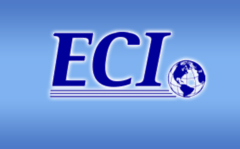Factors affecting the productivity of 4-Column Periodic Counter Current Chromatography (4C-PCC)
Abstract
The advantages of continuous bioprocessing include steady state operation, reduced equipment footprint, high volumetric productivity, streamlined process flow, and reduced capital cost. These benefits have led to considerable interest in evaluating these technologies for the purposes of bioprocess intensification (Konstantinov & Cooney, 2014). It has been shown, through cost of goods modelling, that the cost of protein A is one of the most significant costs in a MAb process, and that decreasing the cost of protein A by maximising loading or increasing lifetime will have a significant effect on consumable costs (Broly, et al., 2010). Consequently, the application of continuous or semi continuous chromatography to primary capture of MAbs is of great interest for reducig overall product cost.
A key factor affecting the productivity of periodic counter current chromatography is the loading time. This must be closely matched to the regeneration time in order to maximize productivity (Pollock, et al., 2013). At low feed stream product titres only modest productivity gains can be obtained when operating around the typical range of residence times for a protein A column. This is because the loading time is considerably longer than the regeneration time. However, by significantly reducing the residence time to less than a minute significant gains in productivity can be achieved.
The productivity obtained using 8mL of silica based protein A media packed in four 2mL columns and run at a residence time of 12 seconds on a 4C-PCC system was compared to that obtained on a 40mL column packed with high capacity agarose based media run at a 4mins residence time in batch mode. The load concentrations were 0.3g/L and 0.44g/L respectively. The productivity gains were found to be about 90% better for the 4CPCC run with similar host cell protein clearance and recovery. The data from this comparison is simarised in table 1.
In order to take full advantage of the benefits of continuous chromatography for primary capture of MAbs, a good understanding of the factors affecting productivity is required. This presentation will aim to highlight those factors and assess their relative importance in maximising the productivity of this downstream processing unit operation.
Table 1 – Comparison of productivity and purity data for 4CPCC and batch runs
Residence time (mins)
Productivity (mg of protein/mL of resin/hour of run time)
Recovery (%)
Host Cell Protein Clearance (Log10)
Host Cell DNA Clearance (Log10)
4CPCC
0.2
13.1
90.1
2.88
Data pending
Batch Run
4
6.8
96.9
2.57
3.11
Broly, H., Mitchell-Logean, C., Costioli, M. D. & Guillemot-Potelle, C., 2010. Cost of Goods Modeling and Quality by Design for Developing Cost-Effective Processes. BioPharm International.
Konstantinov, K. B. & Cooney, C. L., 2014. White Paper on Continuous Bioprocessing. May 20–21, 2014 Continuous Manufacturing Symposium. Journal of Pharmaceutical Sciences, pp. 813-820.
Pollock, J. et al., 2013. Optimising the design and operation of semi-continuous affinity chromatography for clinical and commercial manufacture.. Journal of Chromatography A,, Volume 1284, pp. 17-27.
